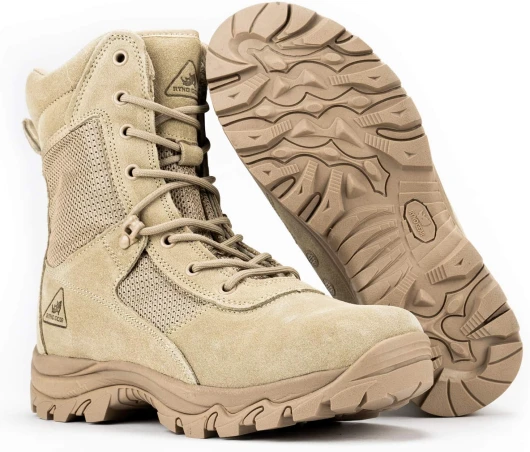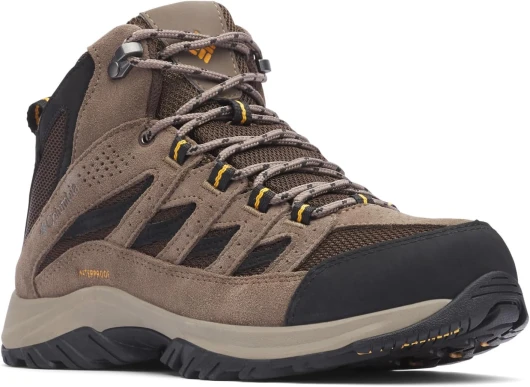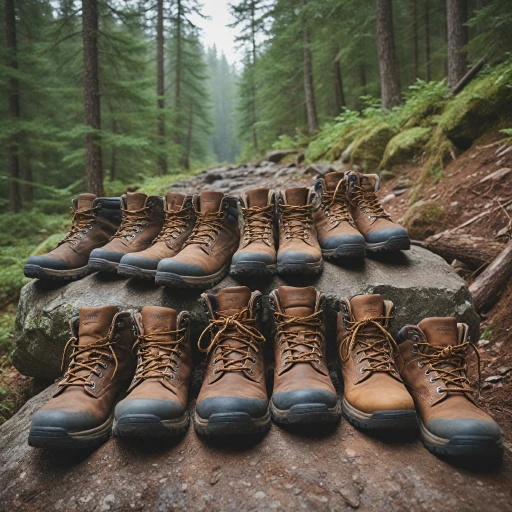
Understanding the Hiking Boot-Shoe Hybrid
Unraveling the Hybrid Adventure Footwear
Imagine combining the comfort and flexibility of your favorite sneakers with the durability and support of reliable hiking boots. This enticing blend is what the hybrid footwear captures—blurring the lines between traditional boot and trail shoe designs. Catering to the needs of outdoor enthusiasts who demand versatile gear, these hybrids offer an innovative approach to conquering trails without compromising comfort or protection. For many hikers, choosing the right pair is an ever-evolving journey, often balancing weight, support, and waterproof features. The hiking boot-shoe hybrids come equipped with unique aspects that appeal to both the casual walker and the seasoned hiker, such as lightweight construction and reliable waterproofing. Some models like the Salomon Quest offer a mid GTX structure that maintains stability while cutting down on bulk. This footwear seamlessly integrates advanced materials like Gore-Tex and EVA foam, creating a waterproof yet breathable experience, just like trail runners or lightweight hiking shoes. Incorporating these features ensures that your feet remain dry and comfortable, a critical aspect during unpredictable weather conditions on the trail. Navigating the maze of options, consider the mid and ultra mid variations, providing degrees of ankle support without adding excessive weight. Among the popular choices, brands such as Merrell Moab and Hoka Kaha stand out for their mid waterproof protection, while the Altra Lone Peak distinguishes itself as a lightweight hiking alternative for those seeking agility over rugged terrain. Explore more on how these boots deliver a blend of comfort and functionality by checking detailed insights on versatile hiking boot options here. The versatility of hybrid footwear invites you to take a closer look and perhaps redefine what your ideal hiking shoe could be.Benefits of Hybrid Footwear
Unmatched Versatility for All Trails
Hiking boot-shoe hybrids bring a wealth of benefits to the table, making them a versatile choice for outdoor enthusiasts. Unlike traditional hiking boots, which can be heavy and bulky, hybrids combine the best features of boots and shoes, offering adaptability across a variety of terrains.
Lightweight Advantage
One of the major advantages of hybrid footwear is the reduction in weight. Designed with lightweight materials, hybrids help you travel further without foot fatigue setting in. This makes them ideal for long trails where every ounce counts. If you're tackling the peak on a midday hike, the decreased weight will certainly be a welcome feature.
Exceptional Comfort and Support
Hybrid designs often prioritize comfort with well-cushioned soles that provide support for your feet on uneven trails. Brands like Salomon and Merrell have perfected their designs to include features like mid GTX versions, which ensure that your feet stay comfortable and supported during extended use.
Waterproof and Breathable
Waterproof technology is fundamental in hiking footwear, and hybrids are no exception. Equipped with materials like Gore Tex (GTX), these shoes maintain dryness even on mid waterproof trails that are wet or muddy. Despite the waterproof quality, breathability is not compromised, allowing your feet to stay cool during intense hikes.
Ready for Any Weather
With hybrid options, you can be prepared for any forecast. From the ultra mid hiking shoe designs that offer protection from rain, to the sturdy yet flexible styles like the Salomon Ultra or Hoka Kaha, hybrids are ready to take on varying climatic conditions.
The ability to switch seamlessly from trail runners to hiking conditions without compromising on performance makes hybrids a must-have for the seasoned hikers. For more insights on choosing versatile hiking footwear, explore Decathlon's hiking boots.
Key Features to Look For
Essential Elements for Selecting Your Ideal Hybrid Footwear
When it comes to choosing the best hiking boot-shoe hybrids, there are certain key features that you should pay attention to in order to experience optimal performance on the trails.
- Material and Waterproofing: One of the top considerations is the material, especially if you are planning on encountering wet conditions. Look for hybrids with gore-tex (GTX) membranes, like mid GTX, which offer excellent waterproofing while still allowing your feet to breathe. Reliable companies such as Salomon and Merrell often offer versions that feature these attributes.
- Weight and Comfort: Consider lightweight options that won't weigh you down. The altra lone, for instance, is known for its lightweight hiking capabilities. Comfort is critical for long hikes, so ensure the insole and cushioning provide adequate support.
- Stability and Support: Check for ample ankle support without the bulkiness of traditional boots. Salomon ultra models often excel in this category, providing just the right amount of support for mixed trails.
- Durability and Traction: The outsole is crucial for rough terrains. Opt for hybrid footwear with durable soles that offer excellent grip, even in slippery situations, like those found in the merrell moab.
- Fit and Sizing: The perfect fit can make all the difference in your hiking experience. It's essential to try on various pairs, such as the hoka kaha or salomon quest, to ensure they accommodate your foot shape and size.
Finding the right balance between these features can significantly enhance your hiking experience. For additional insights into hiking gear, consider this guide on choosing the right trousers for your hiking adventure.
Comparing Hybrids to Traditional Hiking Boots
Contrast Between Hybrid Footwear and Traditional Boots
Exploring the realm of hiking footwear, the debate between hybrid shoes and traditional hiking boots is a topic of interest. One can't help but wonder how these two categories stack up against each other when hitting the trails. Traditional boots have long been the staple of hikers, offering robustness, consistent support, and complete foot protection. They're designed to take on rugged terrains where stability is paramount. Features such as high ankle collars and Gore-Tex (GTX) waterproof membranes are commonplace, ensuring support and protection against the elements. However, hybrid boot-shoes bring a different set of advantages. They are increasingly favored for their blend of durability and athletic flexibility. Unlike traditional boots, they tend to be lighter and less cumbersome, reducing fatigue over the time spent on longer hikes. This can be particularly beneficial when weight and peak performance are critical, lending themselves to ultra mid and trail runner-like designs. Both options usually feature waterproofing technologies, whether it be a mid GTX layer in traditional boots or advanced waterproof membranes in hybrids. This ensures your feet stay dry across changing conditions. Comparatively, hybrid options like the Salomon Ultra and the Moab Mid provide an intersection of benefits, likened to trail runners for more agile movements yet robust enough for rough paths. In contrast, traditional models such as the Salomon Quest emphasize unwavering support and heavy-duty performance, appropriate for severe weather conditions. In the end, the choice may rest on the prioritization of weight over support or speed over durability. Whatever the preference, both hybrids and traditional boots offer distinct pathways to a fulfilling hiking experience.Top Picks for Hiking Boot-Shoe Hybrids
Our Top Selections for Versatile Hybrid Footwear
For hikers searching for the best of both worlds, hybrid footwear melds the protection and durability of boots with the weight and flexibility of trail running shoes. Here's a concise guide to elite hybrid models.- Salomon Quest 4D 3 GTX: With its mid GTX design, these waterproof hiking boots offer excellent support and are among the top choices for those needing a reliable pair for long treks. Its time-tested design ensures both protection and performance.
- Merrell Moab Mid Waterproof: Known for lightweight hiking, this option is best for those seeking a balance between weight and support. The Moab series has long been a favorite for its comfort and durability on diverse trails.
- Altra Lone Peak: These trail runners are optimal for lightweight enthusiasts aiming to reduce foot fatigue. While not as robust as traditional boots, the Lone Peak provides a comfortable alternative for easy to moderate hikes.
- Hoka Kaha GTX: A standout in ultra mid hiking shoes, the Kaha excels in cushioning and waterproof protection. Its gore tex construction is ideal for wet conditions, ensuring that your feet remain dry during unpredictable weather.
- Salomon Ultra Mid GTX: Combining the benefits of hiking boots and shoes, the Ultra Mid offers a lightweight build with enhanced stability and grip. Perfect for those requiring swift movement over challenging terrain.
Tips for Maintaining Your Hybrid Footwear
Keep Your Hybrids in Top Shape
Maintaining your hybrid footwear, whether it's a pair of Salomon Ultra boots or Altra Lone Peak shoes, is essential for ensuring peak performance and longevity. Here are some practical tips to keep your hybrid hiking gear in excellent condition:- Regular Cleaning: After each hike, remove any dirt or debris from your boots or shoes using a soft brush. This helps prevent material degradation and ensures your footwear looks its best.
- Waterproofing Treatments: Although many hiking boot-shoe hybrids, like the Merrell Moab Mid waterproof options, come with Gore-Tex liners, periodic treatments with a quality waterproof spray can help maintain water resistance. This is especially important for maintaining the integrity of mid GTX shoes.
- Proper Drying: Avoid using direct heat sources like radiators to dry your hiking boots. Instead, remove the insoles and let them air dry naturally at room temperature. This method is less likely to damage the materials.
- Storage Tips: Store your boots in a cool, dry place when not in use. Keeping them away from direct sunlight helps preserve the materials and prevent fading.
- Regular Inspections: Periodically check the soles and uppers for signs of wear and tear. Prompt repairs can extend the life of your footwear significantly.
- Lacing Technique: Ensure your shoe laces are tied securely to provide the best support and avoid damage to the eyelets, especially if you enjoy challenging trails in your lightweight hiking shoes.


















